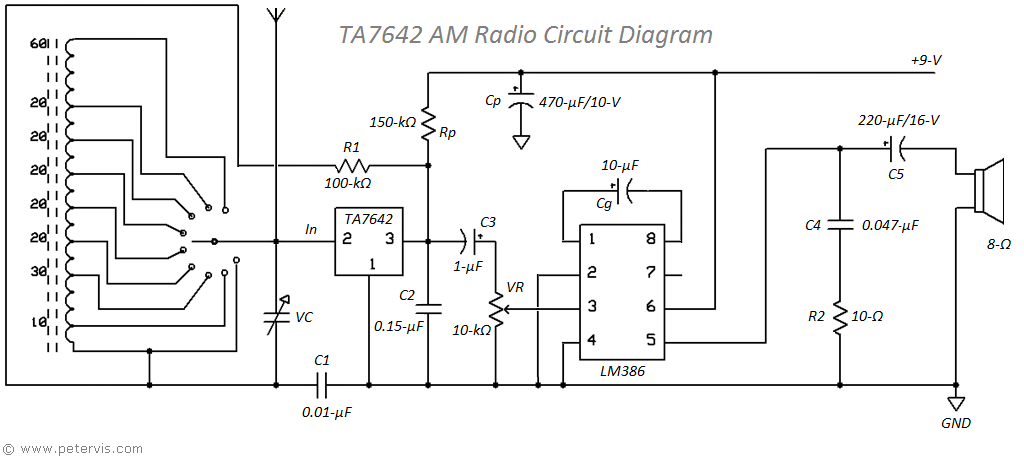TA7642 AM Radio - Project Tom
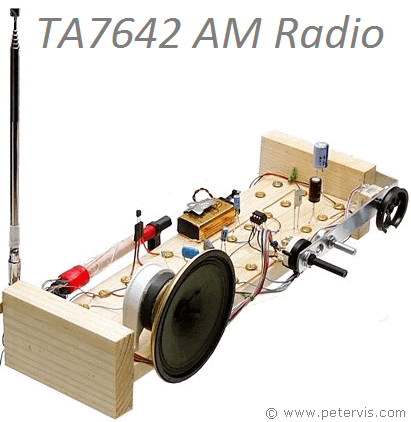
OK, Attention! The first duty of any prisoner of war (POW) is to escape. Project Tom, is the first of a three part AM Radio construction project. This construction uses the TA7642 radio IC, and the amplifier IC is LM386. For the ferrite rod coil, I am using the same one as that shown in the 8 Band Crystal Radio project. I hope that this project will help little whippersnappers escape from the clutches of poverty, because it is designed to be affordable. In the film The Great Escape, they showed a crystal radio which British and American prisoners made to obtain intelligence information. There is historical evidence to suggest that secret crystal radios were used by soldiers to gather intelligence. I remember seeing the film when I was a little whippersnapper, and remember that they constructed three tunnels called Tom, Dick, and Harry. The idea behind this was that if the Germans discovered one tunnel, then they could continue work on the remaining tunnels.
Although heterodyne radios were widely available after 1924, their benefits were unknown until after the Second World War. Before the war, and during, many radios that were in use were simple TRF, and regenerative types. Back in those days, valves were expensive and therefore engineers found innovative ways to increase amplification. One technique was the use of regeneration, where feeding back the same signal two to three times produced huge gain. However, in this project we are using a TA7642 IC, which consists of multiple transistor amplifier stages that produce the required gain to amplify a weak radio signal into one that you can hear.
The TA7642 is a very strange 3-pin IC because the function of the audio output pin 3 also doubles as the power supply (+) input pin. Therefore, we have to use an inter-stage decoupling capacitor (C3) when we connect the output to the following amplifier stage. This way, we can block the DC power supply current and allow the audio signal to pass through. When we use decoupling capacitors, we need to be mindful that they have a low frequency cut-off point and we do not want the cut-off where the amplification is occurring. As a general rule of thumb, for midrange response, I use 1 µF, but you could use higher values such as 4.7 µF. The idea here is that we just want to block DC but we do not want any discernible filtering effects.
The components Rp, and Cp are very critical in this design. Rp determines the power to the circuit, whilst the capacitor Cp provides a small power reservoir close to the circuit. There is additional information about these components in the following pages of this multi-page article.
For audio amplification, this circuit uses an LM386 IC in a configuration usually found in its documentation to produce a gain of 200. The gain of 200 over the standard gain of 20 is accomplished by the addition of a 10 µf capacitor (Cg) across pins 1 and 8, on the LM386 IC. For the tank (tuned circuit) part, I have shown an example coil arrangement with multiple taps for experimentation purposes. If you had a rotary selector switch handy, then you could follow my design, or alternatively, just have a single coil across the variable capacitor to build a simpler circuit.
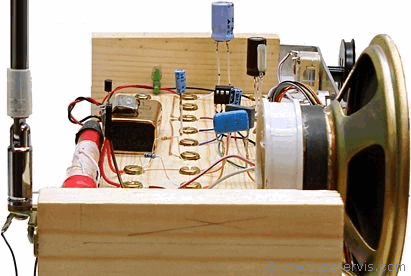
If you have been following The Little Whippersnapper's Crystal Radio projects, then this is just an extension from that. I hope that after building the crystal radio electronics lab and experimenting with some simple transistor radio circuits, you will feel more confident to build a slightly more complex radio.
The Little Whippersnappers Crystal Radio project leads to Project Ultra, which is an 8-band crystal radio. This is just a simple ferrite coil with taps and a selector switch, however it then leads to Project Tom, which is an AM Radio with an integrated circuit.
The Poor Transistor Radio Circuit Architect
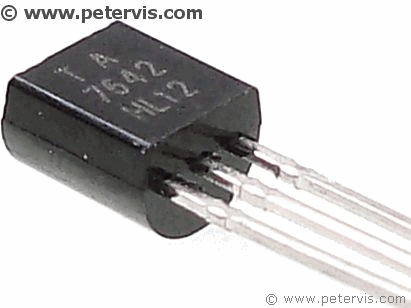
After designing a BC549C transistor radio, I realised that it was very expensive to make due to all the biasing resistors. If The Architect in The Matrix had to explain this, then this is how I believe he would say it:
"The first transistor radio circuit I designed was quite naturally perfect; it was a work of art. Flawless, and sublime. I even calculated the values of the bias resistors taught to me by Agent Johnson at college. However, after calculating the cost of all the components it occurred to me that it was not acceptable. The High Street price for a resistor is 36 pence, and all the biasing resistors were adding to the total bill. Hence, this triumph was equalled by its monumental failure. The inevitability of its doom is apparent to me now as a consequence of the imperfection inherent in every transistor circuit design coinciding with inflation. Thus, I redesigned it based on the LM386 amplifier IC to more accurately reflect the grotesqueries of the HNC BTEC, and GCSE Design & Technology curriculum."
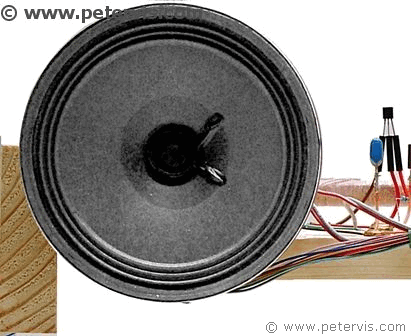
Although this circuit is low cost, you will still need to shop around for many of the parts. I had to shop at eBay, Maplin, local hardware stores, and thrift stores. I also used recycled components such as the loudspeaker, ferrite rod, tuning capacitor, and tools. I hope that you will have something that you will be able to use or recycle for this build.
Advantages of using TA7642 IC
My whippersnappers, who are also members of the scouts organisation, wanted to build a simple three transistor radio, and were considering building the Ladybird Book Transistor Radio. Back in its time, it was a great radio design as germanium transistors were readily and cheaply available. This was because the OC45 and OC71 were like the general purpose BC series of silicon transistors that we widely use today.
After looking at many transistor radio circuits, I decided to settle on the TA7642 AM Radio IC. The great thing about it is that it is an IC with only three pins. Hence, little whippersnappers will find it easy to connect it. You could almost mistake it for a transistor; however, it is much more powerful than a transistor. If you have ever built a transistor radio, then you will know that this IC solves many problems simultaneously.
1. There is no need to use regeneration. This was a form of feedback method to increase gain, but often resulted in creating awful howling and whistling noises.
2. There is no need to look for a germanium detector diode, as it is not required in this circuit. Germanium diodes have been getting expensive over the years, and some sellers have been sneaky selling ordinary silicon Schottky diodes that do not perform as well, and sometimes not at all. Moreover, here is the real kicker; the price of a germanium diode is comparable to the price of the TA7642 IC!
3. There is no need to buy trimmers. I always hated those nasty things because you had to constantly turn the screw, and eventually, either the screw breaks, or the brass plates remain stuck! Moreover, today, trimmers are expensive as well.
4. The best advantage of all is that there is no need to use a Radio Frequency Choke (RFC). I really hate those things as well. Honestly, the person who created those ought to be taken outside and summarily shot. They create a magnetic field, which interacts with the ferrite coil producing feedback. Moreover, if you were using the regeneration technique it was a nightmare to tune into a radio station, because you ended up listening to whistling, howling, and all sorts of feedback noises... You were never sure if it was the fault of the trimmer plates, or the RFC interaction that caused the feedback.
5. Who remembers the twisted wire capacitor? This is where you had a pair of insulated wires closely coupled by twisting them together. That was just awful! Most people will remember twisting it and getting a farting sound from the loudspeaker. So there you were trying to tune into a radio station; 1. You twist the wire pair until the farting sound disappears. 2. You adjusted the trimmer until the howling sound was just on the verge of disappearing. 3. Then you tuned into a station. 4. Then you had to turn the screw of the trimmer plates to increase the regeneration feedback. Of course, one of the wires in the twisted pair capacitor always breaks off because you twisted it too much...
I always say that those people that were making radios in those days ought to get a Nobel Prize, because they had very little to work with, and yet they always came up with an interesting solution. Therefore, after considering all the options, I decided to settle on the most logical solution, for my whippersnappers who are just starting out in electronics. This circuit could also be used for their GCSE Design and Technology Project, or perhaps BTEC Electronics, or whatever the current party political torture happens to be going.
This Article Continues...
TA7642 AM Radio - Project TomTA7642 AM Radio Baseboard Construction
Ferrite Coil
TA7642 Ferrite Coil Connection
Radio Stage
TA7642 AM Radio IC
TA7642 Power Resistor Rp
TA7642 Circuit Build
Amplifier Stage
LM386 Amplifier - TA7642 AM Radio
LM386 Circuit Build
Misc
TA7642 Circuit
TA7642 AM Radio Parts List
TA7642 AM Radio Parting Shots
